What Happened
As part of its FY25 budget request in March, HUD asked Congress to allow it to allocate 80% of its lead hazard control and healthy homes supplemental grants according to a formula with the balance awarded through a competitive process. In a blog, Unleaded Kids applauded the department for the proposal.
The House Appropriations Committee was not convinced, saying in its report that “it does not recommend the grant structural changes outlined in the budget request.”1 The Senate Appropriation Committee took a more favorable view, but it also had concerns. In its bipartisan report, it said:
“The Committee does not approve the request to allocate funds to jurisdictions with the highest need for lead hazard reduction grants by formula, but supports the Department’s goal of streamlining the selection and award process. The Committee directs HUD to continue to work with stakeholders and its authorizing committees as it develops this proposal and to solicit public input on program design.” (page 141)
As recommended by the Senate Committee, HUD requested comments on the formula approach in a Federal Register notice posted September 16. Comments must be submitted to the docket on or before November 15.
HUD describes four goals for a formula approach:
- “Reduce the procedural complexity placed on jurisdictions to apply for grants;
- Streamline the process for HUD to select jurisdictions to receive these formula grants;
- Allow more efficient distribution of funding to communities facing the most substantial lead paint hazard problems; and
- Help maximize funding utilization when complemented by a portion of the funds being used for competitive grants.”
HUD asked for specific comments on the following topics:
- What criteria should be part of a funding formula? Specifically, HUD asks the following:
- Are there useful measures it should use, such as elevated blood lead levels in children or housing, economic, and demographic factors related to lead-safe and healthy homes?Are there “nationally scoped, geographically specific blood lead data” on young children? Should HUD use one of the available data models? (Note: Our March blog that describes five data models from HUD, CDC, and EPA. The state of Ohio has developed a model as well.)
- If HUD supports particular target areas, how should the department evaluate multiple proposals to support lead hazard reductions in those areas?
- What other issues should HUD consider in awarding formula grants? Specifically, HUD asks the following:
- If current high-performing grantees should be a category for formula awards and what should be considered for renewals?Whether a two-year waiting period is appropriate for current grantees?
- How should poor performance on a previous grant be considered?
- Should the formula geographically disperse the funding broadly or concentrate funding in highest-risk communities recognizing that it will reduce the number of jurisdictions receiving funds?
- What should be the period of performance duration for a formula grant? The current grant period is 48 months.
Why it Matters
As we explained in our June blog, HUD’s Lead Hazard Reduction grants are the backbone of lead poisoning prevention efforts in communities across the country. Over the decades, residents in more than 240,000 homes have benefitted. Currently, there are about 200 different grantees in 40 states.
However, HUD’s grant program has struggled, as we noted in our March blog. The agency had not been able to attract sufficient eligible proposals to award the bulk of the funding available for the grants, resulting in deep cuts in FY24’s appropriations and $65 million that had been made available to be awarded in previous years reverting to federal treasury despite the tremendous need for the funds. At Unleaded Kids, we have heard from communities and states that there are serious problems with HUD’s grant programs, problems that go beyond statutory constraints. Some of the complaints can be expected with a competitive grant program, but it is shocking to hear words like “demoralizing” and “infuriating” associated with a program meant to protect children from lead hazards in their homes. It is particularly surprising since we know many of the folks at HUD and how they have dedicated their careers to protecting families from lead-based paint hazards.
Changing how these grants are awarded is likely to have a significant impact—positive or negative—for communities that need these funds to make progress on lead poisoning prevention.
Our Take
We are glad to see HUD acting quickly on the Senate Appropriations Committee’s guidance that the agency should work with stakeholders and solicit public input on the program design of the formula. Only through engaging the public and stakeholders can HUD craft a proposal sufficiently vetted to secure Congressional support.
We encourage everyone involved, either directly or indirectly, with lead hazard reduction in homes to review the notice and our summary of the specific issues and questions described above. Then share their thoughts by submitting comments on or before November 15.
Having many comments will not only help HUD reform the grants program, but it will also signal for HUD and the House and Senate Appropriations committees how important the grants program is to protecting children from lead-based paint risks.
As stakeholders consider providing comments, it is helpful to stick to the structure of the questions HUD asks, but you need not feel constrained to address only those issues. In its report, the Senate Appropriations Committee was clear that it “supports the Department’s goal of streamlining the selection and award process.” The formula approach proposed by HUD is only one means of accomplishing this goal. We encourage you to identify any other suggestions to streamline the selection and award process, as well as the management of the grants. We also invite you to share your comments, ideas, and concerns with Unleaded Kids to help us craft our comments. There are no easy fixes to the problem or even a shared understanding of what the problems are. And in an overhaul as significant as this, we need to be aware of both intended and unintended consequences for communities and the families they serve.
- The Committee passed the bill with only Republican votes. In the Minority Views part of the report at page 381 of the PDF file, the Democrats said “The bill also makes housing less safe for low-income children and families, cutting resources for public housing, including targeted investments to address mold, carbon monoxide, lead, and radon exposures, which would devastate our young families dealing with lead exposure and cause harmful effects on our local health care and education systems. We should be investing in programs that put people to work to build more affordable housing, repair and make more accessible aging housing, and create healthy environments that help communities thrive.” ↩︎

One thought on “Lead in Paint: HUD Seeks Comments on a New Grant Approach”
Comments on Lead Paint Grants. When it comes to lead paint inspections outlined in Law NJAC 5:28A and subsequent bill S3368, New Jersey property owners are being mis-informed and mis-led into paying too much for lead safe inspections. Thus, grant monies used to fund lead safe clearances via visual and dust wipe inspections, are being over spent, resulting in a lower volume of assistance available. Grant monies are being used up before they need to be. Townships are partnering with vendors who are price gouging, and townships are adding fees to the already exorbitant costs.